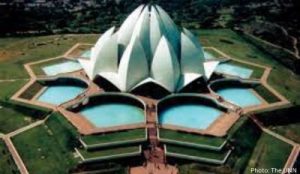Rihanna, people’s all-time favourite pop icon, was seen at her fenty hair launch in Los Angeles wearing a necklace designed by Indian designers Sabyasachi Mukherjee and Manish Malhotra. Fenty Hair is the new launch of her Fenty cosmetic brand.
Sabyasachi and Manish Malhotra diamond design

In the history of Indian fashion, it is highly unlikely that any celebrity wore the combo of Manish Malhotra and Sabyasachi Mukherjee together. The industry’s two titans were united by Rihanna’s fashion ensemble at her Fenty Hair Launch. She wore an off-the-shoulder bomber jacket and a strappy bodycon dress, both in the same shade of dark cherry red, while rocking Manish Malhotra’s collection included an 18-carat gold choker necklace with custom-cut rubies covered in diamonds and Sabyasachi High Jewellery’s three-drop necklace with brilliant-cut diamonds, tourmaline, and rubellites.
Rivalry for the spotlight
Fans and users accused Manish of being “pettish” after he cropped the Sabyasachi jewellery in the images he shared on Instagram. It is to be noticed that Manish posted three pictures on Instagram. Although two of the photos were close-up shots, another one featured a full image of Rihanna wearing both necklaces.
Users also noticed that, despite Sabyasachi not cropping the photo, Manish Malhotra was not tagged in any of the posts.
In a post he published, the Bengali designer included four images of the artist wearing his creation: “Rihanna wears a three-drop rubellite, tourmaline, and brilliant-cut diamond necklace from Sabyasachi High Jewellery for her launch of Fenty Hair Beauty Brand in Los Angeles.”

This event, in spite of the setbacks, showcases Rihanna’s trendy and cutting-edge style alongside the possibility of a change in the relationship between these two top Indian fashion business entities.
Fenty Hair, Rihanna’s next mission

In September 2017, Rihanna introduced her cosmetic line, Fenty Beauty. It was created as part of a bigger vision and a promise to create inclusion for all women. At the moment, the brand provides cosmetic and beauty products. The latest addition to the Fenty franchise by Rihanna is Fenty Hair. Fenty Hair keeps up the promise and offers a wide range of hair supplies for all types of hair.
Rihanna shared to the press at her launch party how creating Fenty Hair as a part of Beauty for All was something she was really excited about since hair has always been very personal to her and her hairstyles have been part of her fashion evolution and growth over the years in the industry.
She also mentioned her take on womanhood and artistic journey and how hair complements everything, “Evolving as a woman and even as an artist, hair has been such a huge part of that and a reflection of whatever I’m feeling. So, it changes a lot, and my hair goes through a lot.” “In making this brand, I had to consider all of those things. I want to look fly, but I also want my hair to be healthy. How do I do that? All of my products need to be strengthened and repaired while I’m out just being fabulous.”

The pop star, who spent a lot of time planning and creating fenty hairstyles for all curly hair types, also talked about how difficult it was compared to her expectations and how her new fenty product helps women of all hair types be confident and stylish.
Fenty Hair Combo
One shampoo, one treatment, two conditioners, four stylers, and one tool make up the Fenty hair collection. It is claimed that every product has been carefully designed and tested to suit all hair types, taking into account a wide range of textures.


